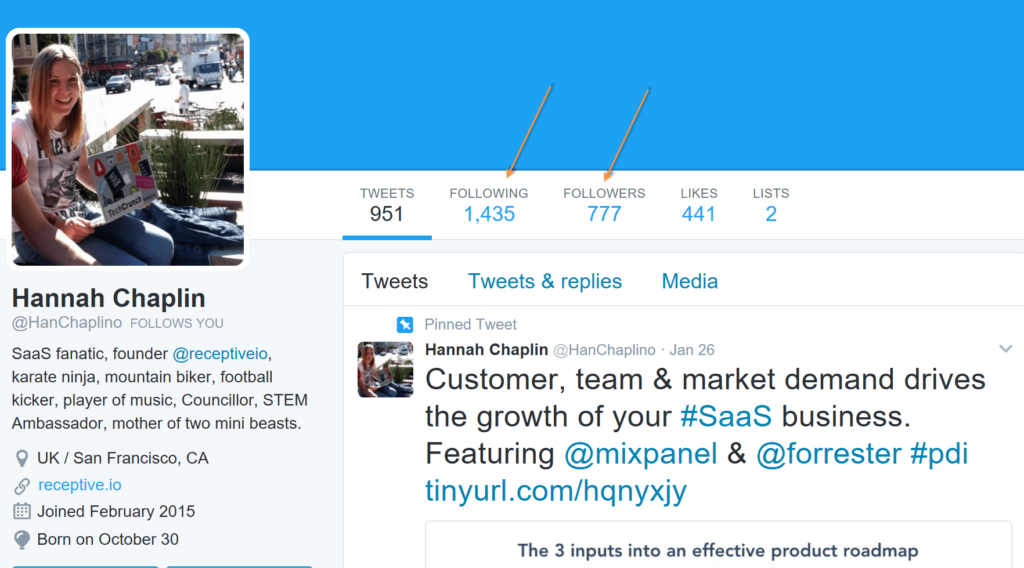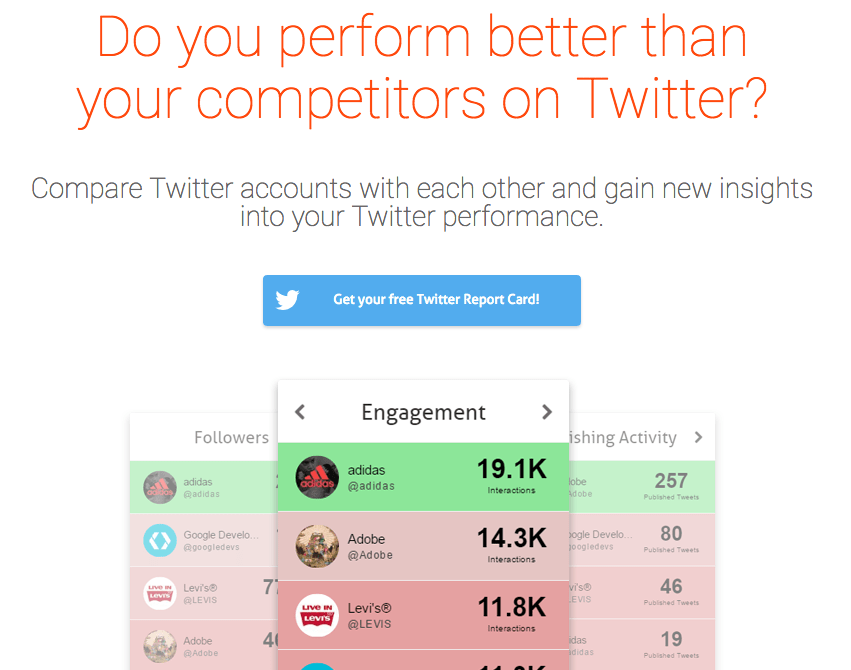They say to always keep your friends close and your enemies closer, right?
This is also true when it comes to monitoring your Twitter competition. Since you and your competitors are going after the same audience, following their moves can be highly beneficial to forming your own strategy.
While it may seem counterintuitive to follow your competitors, as you don’t want to seem desperate or intrusive, there are numerous ways to do so without their knowledge.
Here are a few stealthy ways to keep tabs on your Twitter competition — without them ever finding out.
Do Some Investigating
The primary way I find other relevant folks to follow is by looking at people whose content I enjoy, and check who they’re following as well as who is following them.
This works the same way with competitors. Go to their Twitter accounts and check their follower and following list. Follow any relevant parties on either list.
Odds are, the individuals on either or both of these lists would be a good fit for your brand.
You can gain some solid intel by checking who your Twitter competition is talking to and how active they are on the channel.
Twitter now defaults to showing you someone’s outgoing tweets only, and not their replies. To view replies, go to their Twitter account and click on the “Tweets & Replies” option. (This works best on a desktop.)
You’ll then be able to see any conversation they’re having and with whom. Follow the people they’re talking to!
These are clearly active Twitter users to establishing equally powerful relationships with them can reap rewards for you, too.
If you identify some key partners that they regularly engage with, do a search for both your competitor and that individual to locate historical data on their conversations.
That way, you can assess the relationship and determine whether there are opportunities for you to fill in any holes your competition may have missed.
Use Twitter Lists
One great tactic I use is to create Twitter Lists. Lists can be public or private, but for the purposes of monitoring competitors’ private is the way to go.
To create a list via the web:
- Click on your profile icon to show the drop down menu.
- Click on Lists.
- Click Create new list.
- Select a name for your list, and a short description of the list. Then select if you want the list to be private (only accessible to you) or public (anyone can subscribe to the list).
- Click Save list.
To add or remove people from your lists:
- Click the gear icon on an account’s profile to display the drop down menu.
- Select Add or remove from lists. (You don’t need to be following an account to add them to your list.)
- A pop-up will appear displaying your created lists. Click the checkbox next to the the lists you would like to add the account to, or uncheck the lists you’d like to remove the account from.
- To check to see if the account you wanted to add was successfully included in that list, navigate to the Lists tab on your profile page. Click the desired list, then click List members. The account will appear in the list of members.
This works well in assessing competitors you know about as well as ones you may not. For example, following along certain relevant industry hashtags may allow you to learn about new players in the marketplace that may be worth exploring.
I often create a variety of private lists for my clients. The lists often include topics like partners, clients, prospects, and, yep, competitors.
It is also worth exploring if your competitors have any public lists that may be beneficial to explore.
Pull out the Big Guns
Many social media dashboards also offer more detailed insight into your competitors’ online behaviors.
Agorapulse’s Twitter Report Card offers analytics specifically designed to showcase whether you perform better than your competitors on Twitter.
Even better? It’s free!
Here’s an example of metrics between my friend Kim and me:
Many dashboards aggregate basic follower/following data, but not many dive into the details of publishing and engagement trends, so this data is especially useful.
Is your Twitter competition more active than you? That’s a good excuse to step up your game.
Are you more active than they are, but perhaps their conversation rate is higher? Work on ways to incorporate more conversations into your communications to balance the playing field.
Between following your comp set and who they’re talking to; creating specific Twitter lists; and using advanced dashboards to compare yourself to the rest, you’re set to surpass your competition in no time!










